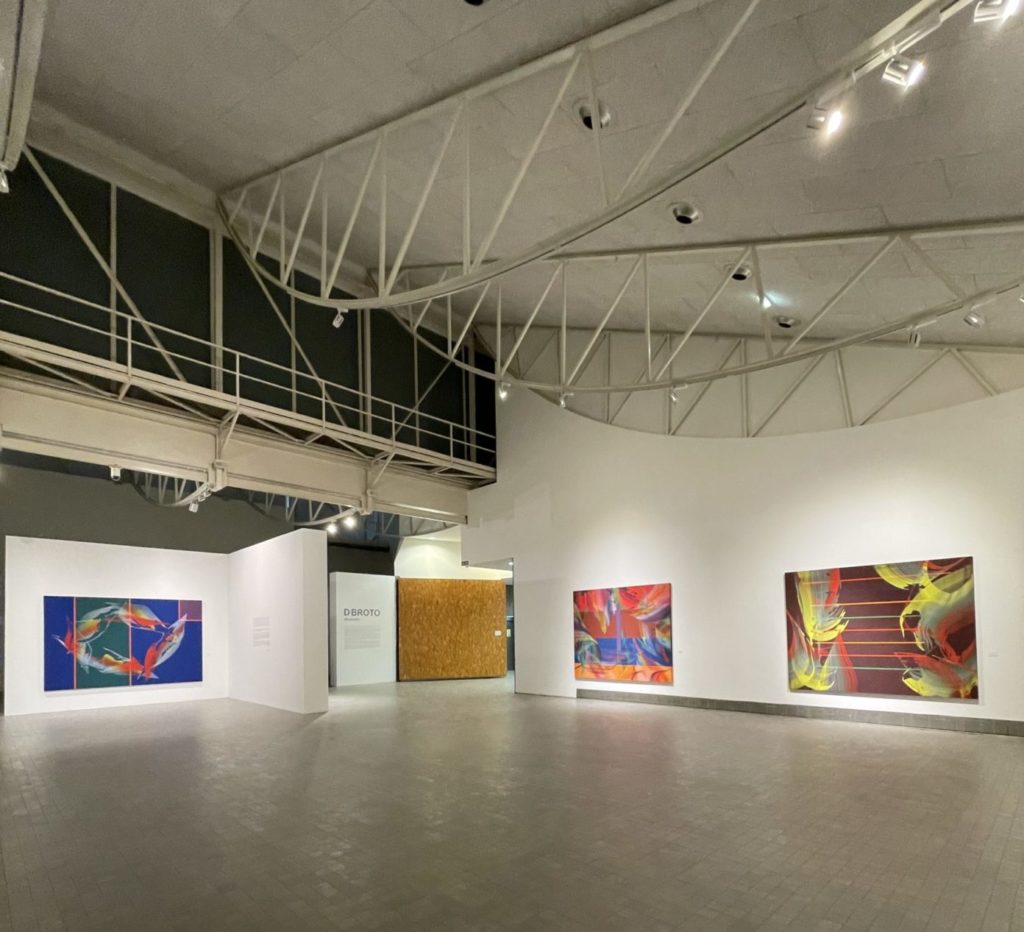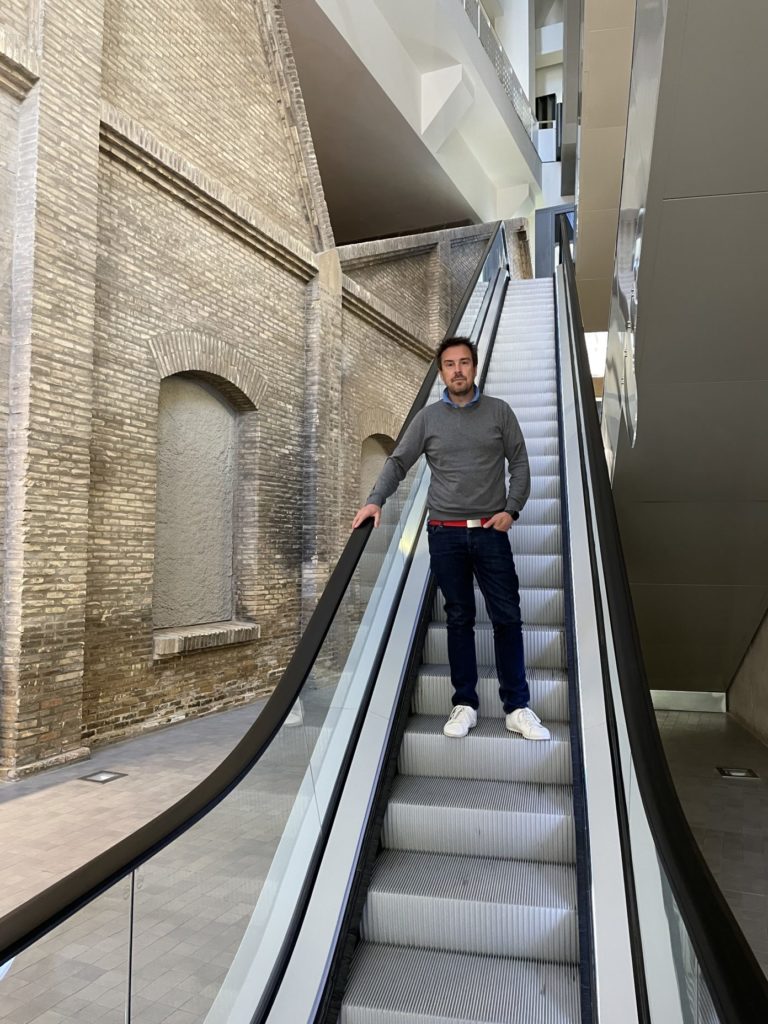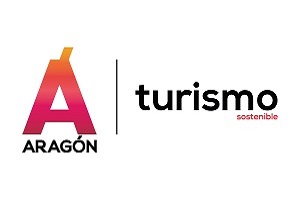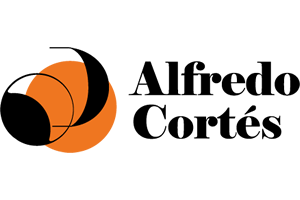Julio Ramón is the director of the IAACC Pablo Serrano, the museum that has become the epicentre and point of reference for contemporary culture in Aragon. The centre, which exhibits the legacy of Pablo Serrano and the work of Aragonese artists, is working on redefining its structure, and in the coming months will inaugurate the germ of what will be the new permanent exhibition that will relate contemporary artists to their context.
How is the IAACC Pablo Serrano celebrating International Museum Day this year?
For the last few years we have been extending the actions for a week. Last Sunday we already did a tour of Pablo Serrano and tomorrow, on Museum Day, we are inaugurating an exhibition, recovering spaces in the museum, such as the Portico Space, which had only been used for circulations due to the covid protocols. It is an exhibition of sculpture with our own funds, both from Circa XX and the IAACC. Under the premise The Everyday in Space. Artists of the volume, six works, 5 by women and 1 by a man, which have started from painting or drawing to sculpture. Through pieces and elements of everyday life, they make us reflect. And it also has a vindictive point because the fact that there are five women and one man is no coincidence. The union of woman and artist is not easy to see, which is why the proportion of 5-1, although subtle, makes perfect sense, because it is usually the other way round.
On Tuesday afternoon there will be a guided tour of The Conquest of Space. Pablo Serrano in the public sphere, the semi-permanent exhibition of the Aragonese sculptor. On Wednesday there will be the first visit to the exhibition of the new sculpture exhibition. All visits need to be booked in advance.
Between now and the summer you have a very powerful programme, what is the intention?
Now until June we are exhibiting the donation of the 10 works by Broto. It is a commitment of the museum and the General Directorate of Culture of the Government of Aragon that everything that enters the museum with relevance, whether purchased or donated, is shown to the public and can be seen. The work is then integrated into the collections and will be exhibited when the time comes. Looking ahead to the summer there are two main axes; on the one hand, we are taking part in the programme for the 275th anniversary of Goya’s birth with two exhibitions. The first is more of a spectacle, it is the immersive exhibition of the Black Paintings preserved in the Prado Museum. The Government of Aragon has signed an agreement with the art gallery for the transfer of these images and to be able to show them to the public in this way, as if they were in the Quinta del Sordo. And the second exhibition is more linked to artistic creation: Poéticas Surrealistas.

What is Surrealist Poetics?
It has always been said that Goya is the precursor, the one who opens the door to surrealism and contemporary art. We show this fact and play with Goya’s prints from the Caprichos and Disparates. From what he introduces conceptually and from the contents of these two series, we show how established Aragonese artists of the 20th century such as Antonio Saura, Pablo Serrano, Víctor Mira and Buñuel with Masats dialogue perfectly with what Goya introduces, reaching that surrealism that we can already start in those Caprichos. But it doesn’t end there, because from the masters of Aragonese art, the legacy of surrealism and Goya reaches current Aragonese artists such as Antonio Fernández Alvira, Natalia Escudero, OPN and Señor Cifrián.
What is the second axis of the new IAACC discourse?
The second axis is to inaugurate the exhibition Aragon and the arts, which we hope to do during the month of July. It is going to become the germ of the permanent exhibition beyond Pablo Serrano, where we will tell the story of Aragonese contemporary art in relation to the national and international context. We will begin by analysing the first two decades after the Civil War in rooms 3 and 4 of the IAACC. This is a six-year museum project.

How will the project evolve?
The first exhibition will remain fixed for two years, it is semi-permanent. After that, we will leave part of the exhibition and present the following period until the arrival of democracy in Spain, and we will continue the same process with the third block, until the beginning of the 21st century. With these parts that we will leave behind, the discourse of what will be the permanent exhibition that will remain fixed in the museum will be formed.
Do you think that this context of contemporary art is missing in order to attract more visitors?
It is a historical demand of this autonomous community. In the 1990s there were already attempts, a very determined one, led by Concha Lomba, to create the Museum of Contemporary Aragonese Art. The important thing is that in 1995, when the Pablo Serrano was created as we know it today, it was said that the work of Pablo Serrano would be exhibited and that Aragonese art from the 20th century would be contextualised with national and international art. It was a debt we owed to the citizens… it’s not that it’s a commitment, it’s a need to know why we are where we are in contemporary art in the right way.
What place do Aragonese artists have in this reconfiguration?
Temporary exhibitions will be programmed on the ground floor with its different spaces. The objective of the configuration of the IAACC is being achieved, to show contemporary art in its context. This doesn’t imply leaving aside what is being worked on to make room for all manifestations of contemporary art, but the contemporary art collection of Aragonese art was not being given visibility.

There are international collections and very important paintings by well-known artists that are not being shown and that would attract more public.
They are not being exhibited and will be incorporated. We are working in this direction, so that the collections can be seen in context, and we will also work on monographic collections or even loans. Doing 15 temporary exhibitions a year is not economically viable. One of the things we are particularly satisfied with this year is the call for artistic production and research under the name Pablo Serrano-Juana Francés. They donated a large part of their work to create the museum, they promoted and believed in artistic creation and what better than to have it named after them. We are fulfilling their legacy to us. It is a national public call, we have received 16 projects from all over Spain and Roberto Coromina’s has been selected to develop his creative project, which will then be exhibited at the IAACC.
“15 TEMPORARY EXHIBITIONS A YEAR IS ECONOMICALLY UNFEASIBLE”.
How have you adapted to the covid?
When in the 1990s websites began to gain prominence, someone said that it might be a substitute for going to the museum, but no, it has been just another tool. The confinement and reincorporation has made us use digital channels on a daily basis. We have realised that people who can’t go to the museum can participate in the events, they are given quality through social networks and streaming. We have done events and broadcasts that have helped us to reach a wider public, we have opened a Tik Tok channel…

Have you gained visibility thanks to this? Despite being an Institute of Contemporary Art, it is not sufficiently relevant on the national museum scene.
Nor does it have it. It’s a must and we’re working on it… it’s a work in progress. Until you have repercussions, it’s hard.
What is missing to achieve it?
We are participating in exhibitions and leaving works on loan, sending information to other museums, bringing national exhibitions such as that of the Alberto García-Alix National Photography Prize. We also use new channels such as Tik Tok to reach new audiences and we have a relationship with the Prado Museum, which gives us a like from time to time, the Museum of Modern Art in Luxembourg, with whom we have established a dialogue, we send articles to magazines… it’s about giving visibility through this continuous work that leaves a lasting impression.














